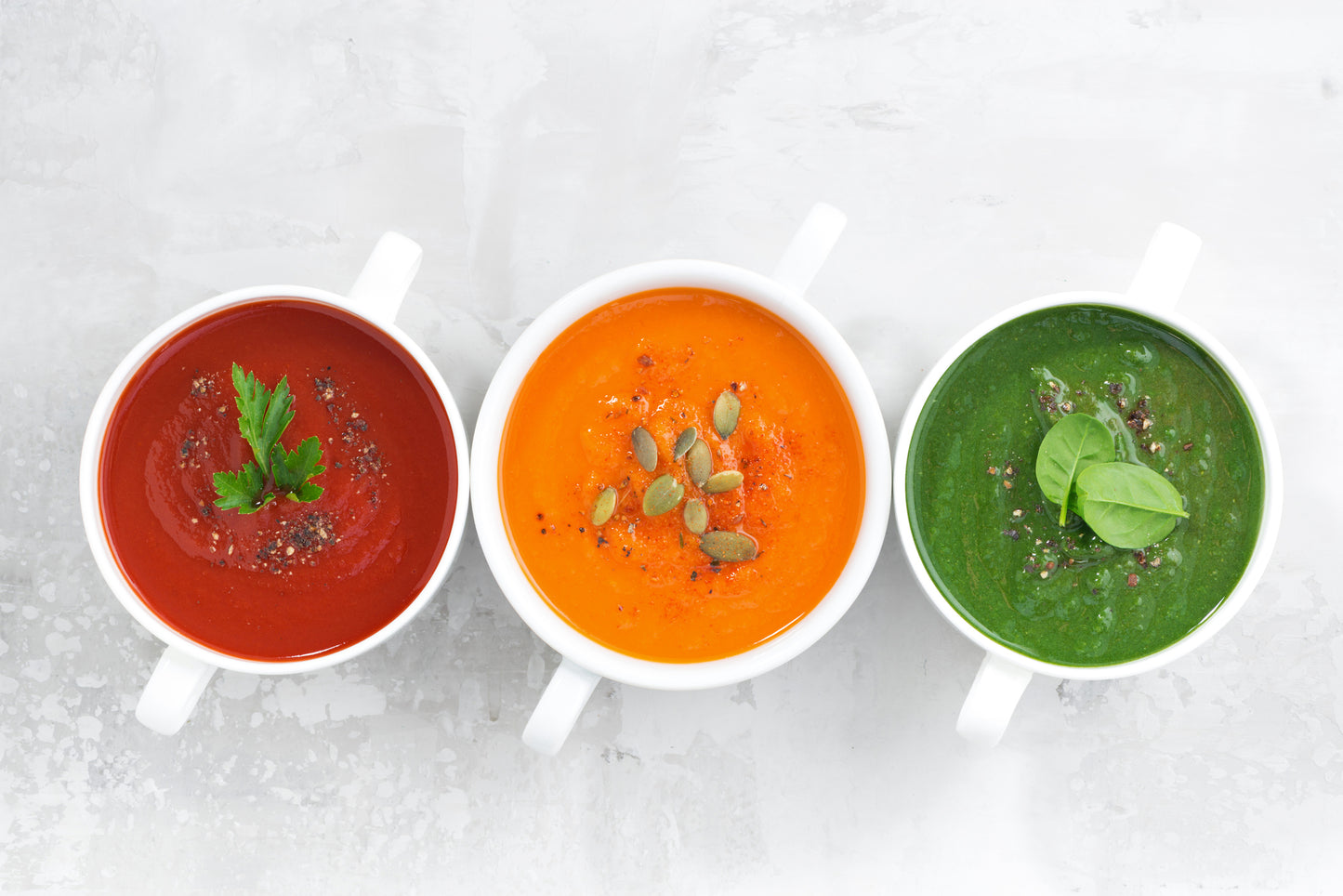
Getting More Vegetables with Broth Loading Soups
You know me—I’m crazy for bone broth. I love how it tastes, and I love the awesome things it does for my skin and my waistline. And here’s something else I love about bone broth: You can transform it into a huge variety of luscious, filling soups. So if you’re looking for an alternative to bone broth straight from the mug, try “souping up” your diet with what I call broth loading soups.
These are a cornerstone of my new 10-Day Belly Slimdown. Here’s how to turn your bone broth into a delicious, veggie-packed clear or creamy soup. First, make a batch of homemade bone broth, or order up some of my Bone Broth or Collagen Broth. Then try one or more of these variations:
Add Some Non-Starchy Vegetables.
The sky’s the limit here. Great choices include asparagus, bell peppers, bok choy, broccoli, broccoli rabe, Brussels sprouts, cauliflower, celery, chile peppers, cucumbers, daikon, eggplant, garlic, green beans, green or red cabbage, green onions, jalapeño peppers, leeks, mushrooms, napa cabbage, onions, radicchio, radishes, sprouts, yellow summer squash, zucchini, and tomatoes.
Make a Creamy Soup.
Adding canned coconut milk will transform your broth into a rich, creamy soup. Cauliflower, broccoli, asparagus, tomato, and mushrooms all make great creamy soups. As a general rule of thumb, use a quarter cup of coconut milk per 8 ounces of broth. You can leave your soup chunky or puree it with a regular blender or immersion blender. Don’t have canned coconut milk on hand? Add one quarter of a pureed avocado per cup of broth, and you’ll get a lovely creamy texture.
Make a Hearty Vegetable Soup.
Rather than simply adding a single vegetable, add a whole cornucopia of them! Combining vegetables such as cabbage, tomatoes, zucchini, green beans, onions, and peppers will give you a hearty, filling vegetable soup. (One of my favorites is a classic cabbage soup with tomatoes, onions, and cabbage.) As a general rule, use about one-half to 1 cup of veggies per cup of broth.
Sauté or Roast Your Vegetables.
Sautéing or roasting your veggies before you use them in your soup gives them an added depth of flavor. In particular, sautéed onion and garlic boost the flavor of soups.
Add “Ramen.”
Spiralize some zucchini for a healthy version of ramen! For extra color, use a combination of zucchini and yellow summer squash.
Make a Cold Soup.
A cold cucumber soup or gazpacho is a refreshing change of pace, especially on warm days
Add Herbs and Spices.
Use these fat-burning herbs and spices in your broth loading soups as much as possible: Here are some tips for creating flavor-packed soups using herbs or spices:
- Thyme works well in a creamy soup like cauliflower or mushroom soup.
- Try Italian seasonings like basil, oregano, and thyme in a creamy tomato soup.
- Make a Mexican-style soup with cumin, chili powder, and paprika.
- Dill, parsley, and lemon zest are delicious in a chilled cucumber soup.
If you’re adding herbs and spices to 8 to 16 ounces of bone broth, start by adding a shake or two of each herb or spice and then season to taste. If you’re making larger batches of a broth loading soup (32 ounces or more), start with ½ teaspoon of each herb and spice you want to add, and then taste-test and season to your liking.
Batch cook your favorites!
After you experiment with different soups, decide which versions you like best and make big batches of several of them. (Clear soups will freeze well, while it’s best to keep creamy soups in the fridge and enjoy them within a few days.) By batch-cooking your soups, you’ll guarantee that you always have a warm, satisfying mug or bowl of soup handy—and you’ll have a variety of soups to choose from, so your taste buds will never get bored!







